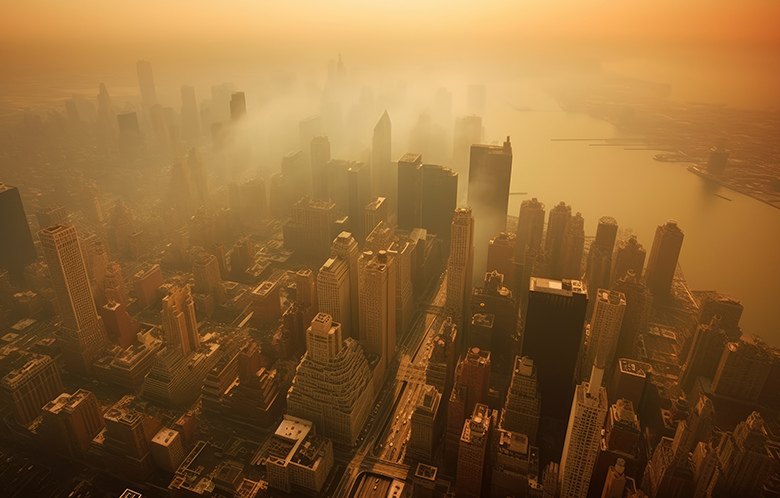As air pollution rates continue to rise there is a growing concern about the impact and adverse health effects of poor air quality. Air pollution is defined as one or more contaminants in the air (dust, gas, smoke, odor, vapor) in amounts that can be harmful to health. As climate change continues to negatively affect air quality, including contributing to an increase in the frequency and intensity of wildfires, the risks of injury from toxic inhalation in both the short- and long-term are crucial not only to those living in regions of the fire, but also to those hundreds of miles away. As the frequency of wildfire events continues to increase, inhalation injury may become a more common concern.
Toxic inhalation injury is a condition that may result directly from breathing in toxic substances such as irritant or nonirritant gases, vapors, fumes, dusts, mists, aerosols, and airborne particles, but most commonly, smoke. Breathing polluted air and toxins can trigger a cascade of pathogenic courses such as inflammation, oxidative stress, or immunosuppression, ultimately affecting any organ in the body. Secondary health effects can range in severity based on the intensity, duration, and type of exposures. Short-term effects can include respiratory symptoms (cough, trouble breathing, wheezing, rhinitis), headaches, fatigue, tachycardia, and aggravated asthma. Long-term effects can include more serious conditions such as stroke, ischemic heart disease, chronic obstructive pulmonary disorder (COPD), cancer, and even death.
Children and adolescents, older adults, pregnant persons, and people with underlying chronic conditions may be at even greater risk for adverse health effects from polluted air. Children and adolescents’ lungs are still developing, and lung function can be compromised if exposed to poor air quality during development. The natural process of aging can cause the body to become more vulnerable to hazardous exposures in general, including poor air quality. The World Health Organization notes that breathing in poor air while pregnant may contribute to low birth weight, preterm birth, and smaller size than usual for gestational age.
Children and adolescents, older adults, pregnant persons, and people with underlying chronic conditions may be at even greater risk for adverse health effects from polluted air.
Children and adolescents, older adults, pregnant persons, and people with underlying chronic conditions may be at even greater risk for adverse health effects from polluted air.
Treatment for health conditions associated with air pollution can vary, but there are steps people can take to try to limit their exposure to air pollution. Tips on ways to protect yourself from polluted air include:
- Check daily air pollution forecasts for your region.
- Avoid outdoor activities such as exercise or play when pollution levels are high.
- If going outdoors during times of poor air quality, consider wearing a well-fitted mask.
- Avoid exercising near high vehicle traffic areas even if there is no concern for high pollution levels.
- Stay hydrated to keep respiratory membranes moist.
- If advised to remain indoors, keep windows and doors closed and run an air conditioner, if possible.
- Don’t burn wood or trash, as firewood burning is a leading source of pollution in the United States.
Guidance from professional organizations to protect yourself from wildfire smoke and poor air quality can be found at CDC, EPA, Alberta Health.



